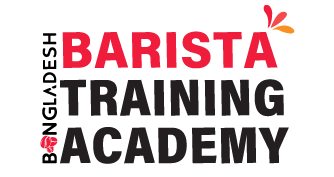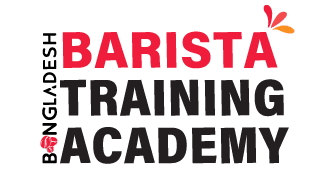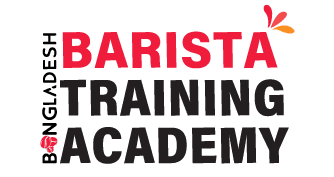The Ultimate Guide to Becoming a Professional Barista
The Ultimate Guide to Becoming a Professional Barista
Coffee culture has grown exceptionally over the past few decades, transforming from a simple morning ritual into a sophisticated craft. Becoming a professional barista is more than just making a great cup of coffee. it’s about mastering the art and science behind every brew. This guide will take you through the essential steps to becoming a professional barista, covering everything from foundational knowledge to advanced skills and industry insights. The coffee industry has a wide range of job opportunities for those who looking to work in cafes or coffee houses. A professional barista prepares coffee or tea beverages and interacts with customers daily or breaks their experience. Understanding the jobs of a professional barista, the essential expertise, and career growth can support you in deciding if becoming a professional barista is right for you. Professional Barista

1. Professional Barista Understanding Coffee Fundamentals
Before diving into the hands-on skill, building a strong introduction to coffee knowledge is crucial. Coffee beans are mainly made of two types: Arabica and Robusta. Arabica beans are well-known for their smooth, complex flavor and are usually considered superior in quality. Robusta beans, on the other hand, have a stronger, more bitter flavor and are often used in espresso blenders for their higher caffeine content and rich aroma. Understanding the geographic origins of coffee such as from Ethiopia, Colombia, Brazil, and Vietnam helps baristas appreciate the diverse flavor profiles that different regions offer, for example, Ethiopian coffees are known for their nutty and chocolatey flavors.
A. Coffee Origins and Varieties
Coffee beans come primarily from two species: Arabica and Robusta. Arabica beans are known for their smooth yet complex flavors and are generally considered superior in quality. Robusta beans, on the other hand, have a stronger, more bitter flavor and are often used in espresso blends for their higher caffeine content and rich flavors. Understanding the geographic origins of coffee, such as those from Ethiopia, Colombia, Brazil, and Vietnam, helps baristas appreciate the diverse flavor profiles that different regions offer. For example, Ethiopian coffees often have fruity and floral notes, while Brazilian coffees are known for their nutty and chocolatey flavors.
B. The Coffee Bean Journey
There are several crucial steps in the process of turning a bean into a cup: planting, harvesting, processing, roasting, grinding, and brewing. A professional barista should understand each of these stages to appreciate the coffee they work with and communicate this knowledge to customers.
2. Mastering Brewing Techniques
Coffee brewing is a barista’s main responsibility, thus learning different brewing methods is crucial. Different brewing methods extract different flavors and aromas from the coffee, and a skilled barista should be proficient in several techniques to get your taste buds all excited for the next sip.
A. Espresso Making
Espresso is the base of many coffee drinks. Mastering the art of espresso is a fundamental skill for any barista. To pull a perfect shot of espresso, you need to understand the importance of factors like grind size, water temperature, pressure, and extraction time. A quality shot of espresso should have a golden, creamy crema on top and a well-balanced flavor that isn’t overly sour or harsh.
B. Pour-Over Coffee
Pour-over method, sounds hard right? Guess what it’s the easiest yet one of the best ways of making a cup of coffee. The word pour-over is simply a catchall for any kind of handmade brew method where you pour water over coffee grounds without the assistance of a machine. The barista controls every aspect of the brewing process, including the water flow and timing. Mastering pour-over techniques requires patience, precision, and an understanding of how grind size, water temperature, and brewing time affect the final cup.
C. French Press
The French press is a classic way where coffee grounds sit in water for four to five minutes and then the coffee grounds are pressed in a filtered brewing machine. A French press’s coarse grind and extended brewing period enable a robust flavor extraction. A professional barista should know how to time the brew and plunge the press to prevent over-extraction and bitterness.
D. Latte Art
Latte art has become a symbol of barista craftsmanship. It’s the pattern or design that you see on top of drinks like lattes, cappuccinos, and other similar milk and espresso-based drinks. Creating complex designs on the surface of steamed milk requires both artistic skill and a deep understanding of the texture of milk and espresso extraction. The key to achieving a good latte art is the proper consistency of milk. Resulting in a silky, smooth foam that seamlessly blends with the espresso.
3. Understanding the Coffee palate
Understanding and identifying the subtle differences in coffee profiles is the ultimate skill for a professional barista. This skill is honed through countless days of tasting and practice.
A. Cupping
coffee cupping also known as coffee tasting is the standard method for evaluating the quality of the coffee. During a cupping session, baristas evaluate the coffee’s aroma, flavor, acidity, body, and aftertaste. This practice enhances a barista’s understanding of different flavor profiles and improves their ability to recommend coffee to consumers.
B. Flavor Profiling
An expert barista can recognize distinct flavor notes of coffee. Being able to identify specific tasting notes—such as fruity, nutty, or floral—is crucial for a professional barista. This skill allows baristas to describe the coffee’s flavor to customers more accurately and suggest pairings or brewing methods that highlight its best qualities.
4. Customer Service and Communication
A professional barista needs excellent customer service and communication abilities beyond technical skills. The barista’s role is not only to prepare coffee but also to create a friendly and welcoming environment and educate consumers about coffee.
A. Engaging with Customers
A barista’s interaction with consumers can make or break their experience. Friendly and attentive service is key to building a loyal customer base. This includes remembering frequent customers’ preferences and making the coffee experience enjoyable and informative.
B. Coffee Education
Customers often look up to baristas for advice on coffee selection and brewing methods. A professional barista should be able to explain the differences between coffee varieties and brewing techniques. This requires a deep knowledge of coffee and the ability to communicate effectively.
5. Continuous Learning and Development
The coffee business is always changing, evolving with new methods, tools, and trends appearing regularly. A professional barista must be committed to continuous learning to stay ahead in the industry.
A. Attending Workshops and Courses
Baristas can pursue specialized training in everything from advanced brewing techniques to coffee shop management through institutions specialized for baristas. To accelerate your learning and achieve a solid foundation, consider enrolling in our professional barista training course these workshops are a great way to evolve your current skill set to stay updated in the industry.
B. Certifications and their actual values
certifications do matter in many aspects of skills. Value-added certifications can enhance your credibility and career prospects. These certifications demonstrate your expertise and commitment to the craft.
C. Practice, Practice, and more Practice
patient practice is what truly makes a perfect barista. Constant practice sessions can help you grow as a barista and stay inspired. Try to participate in local barista competitions, events, and online communities to stay connected with the coffee world.
6. Understanding the Business Side
For those aspiring to open their own coffee shop or move into management, understanding the business side of the coffee industry is essential.
A. Coffee Shop Management, Marketing and Branding
Making excellent coffee is not the only thing required to run a successful coffee shop. It requires a good amount of knowledge of inventory management, staff training, customer service, finance, and many more. Building a brand and marketing your coffee shop effectively is key to attracting loyal customers. This includes everything from creating a unique shop ambiance to developing a strong online presence. Understanding these aspects will help you build your desired coffee shop brand.
Conclusion
Becoming a professional barista is a journey that requires the utmost dedication, passion, and a commitment to continuous learning. By mastering the fundamentals of coffee, honing your brewing techniques, developing your palate, and understanding the business side of the industry. you can have a successful career in the evolving industry. Aspire your dreams to become reality. Make your dreams come true through hardships. The skills and knowledge you acquire as a professional barista will serve as the foundation for your success.



